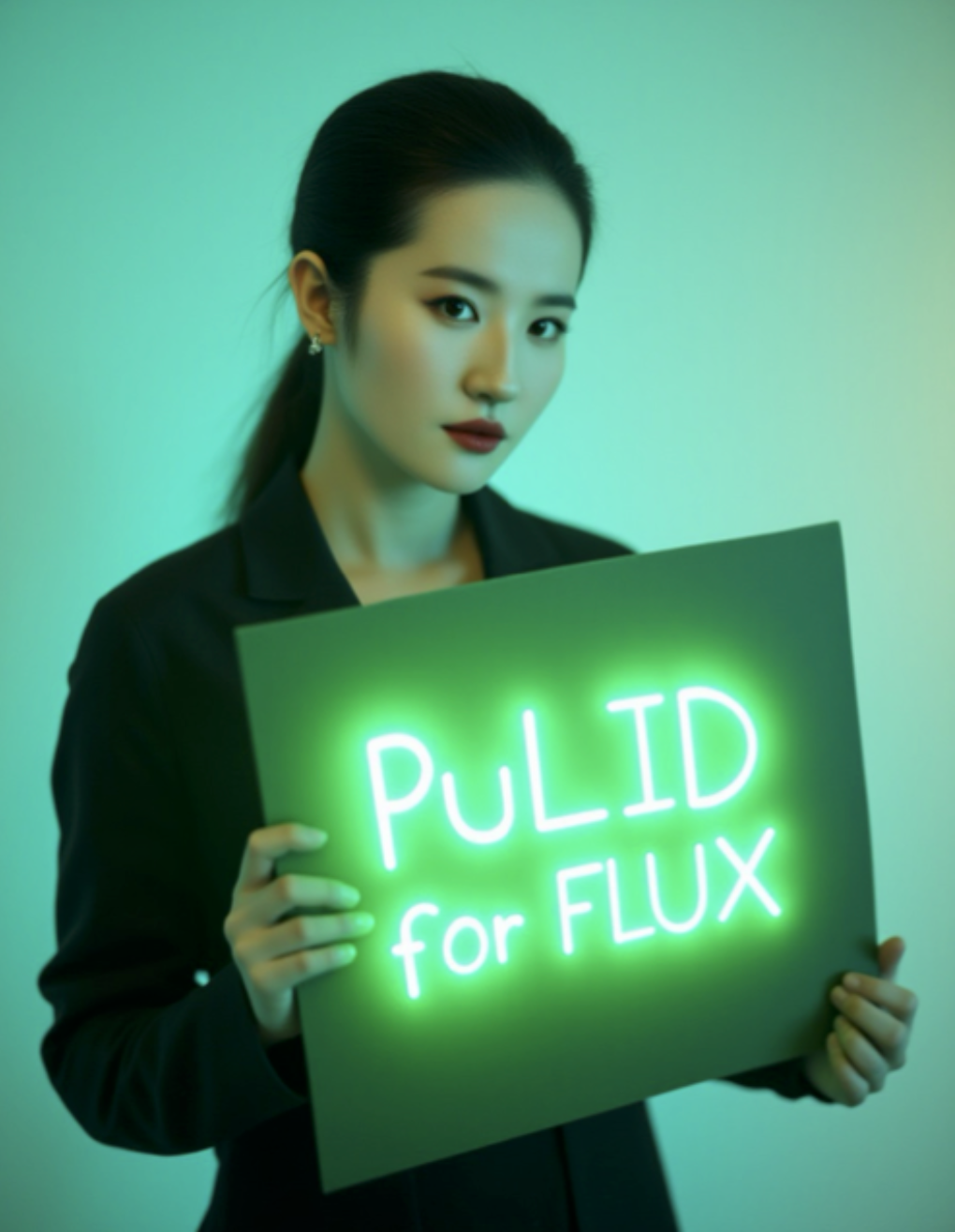flux_img2img
Maintainer: bxclib2

8

| Property | Value |
|---|---|
| Run this model | Run on Replicate |
| API spec | View on Replicate |
| Github link | No Github link provided |
| Paper link | No paper link provided |
Create account to get full access
Model overview
flux_img2img is a ready-to-use image-to-image workflow powered by the Flux AI model. It can take an input image and generate a new image based on a provided prompt. This model is similar to other image-to-image models like sdxl-lightning-4step, flux-pro, flux-dev, realvisxl-v2-img2img, and ssd-1b-img2img, all of which are focused on generating high-quality images from text or image inputs.
Model inputs and outputs
flux_img2img takes in an input image, a text prompt, and some optional parameters to control the image generation process. It then outputs a new image that reflects the input image modified according to the provided prompt.
Inputs
- Image: The input image to be modified
- Seed: The seed for the random number generator, 0 means random
- Steps: The number of steps to take during the image generation process
- Denoising: The denoising value to use
- Scheduler: The scheduler to use for the image generation
- Sampler Name: The sampler to use for the image generation
- Positive Prompt: The text prompt to guide the image generation
Outputs
- Output: The generated image, returned as a URI
Capabilities
flux_img2img can take an input image and modify it in significant ways based on a text prompt. For example, you could start with a landscape photo and then use a prompt like "an anime style fantasy castle in the foreground" to generate a new image with a castle added. The model is capable of making large-scale changes to the image while maintaining high visual quality.
What can I use it for?
flux_img2img could be used for a variety of creative and practical applications. For example, you could use it to generate new product designs, concept art for games or movies, or even personalized art pieces. The model's ability to blend an input image with a textual prompt makes it a powerful tool for anyone looking to create unique visual content.
Things to try
One interesting thing to try with flux_img2img is to start with a simple input image, like a photograph of a person, and then use different prompts to see how the model can transform the image in unexpected ways. For example, you could try prompts like "a cyberpunk version of this person" or "this person as a fantasy wizard" to see the range of possibilities.
This summary was produced with help from an AI and may contain inaccuracies - check out the links to read the original source documents!
Related Models

flux-dev-inpainting

18
flux-dev-inpainting is an AI model developed by zsxkib that can fill in masked parts of images. This model is similar to other inpainting models like stable-diffusion-inpainting, sdxl-inpainting, and inpainting-xl, which use Stable Diffusion or other diffusion models to generate content that fills in missing regions of an image. Model inputs and outputs The flux-dev-inpainting model takes several inputs to control the inpainting process: Inputs Mask**: The mask image that defines the region to be inpainted Image**: The input image to be inpainted Prompt**: The text prompt that guides the inpainting process Strength**: The strength of the inpainting, ranging from 0 to 1 Seed**: The random seed to use for the inpainting process Output Format**: The format of the output image (e.g. WEBP) Output Quality**: The quality of the output image, from 0 to 100 Outputs Output**: The inpainted image Capabilities The flux-dev-inpainting model can generate realistic and visually coherent content to fill in masked regions of an image. It can handle a wide range of image types and prompts, and produces high-quality output. The model is particularly adept at preserving the overall style and composition of the original image while seamlessly integrating the inpainted content. What can I use it for? You can use flux-dev-inpainting for a variety of image editing and manipulation tasks, such as: Removing unwanted objects or elements from an image Filling in missing or damaged parts of an image Creating new image content by inpainting custom prompts Experimenting with different inpainting techniques and styles The model's capabilities make it a powerful tool for creative projects, photo editing, and visual content production. You can also explore using flux-dev-inpainting in combination with other FLUX-based models for more advanced image-to-image workflows. Things to try Try experimenting with different input prompts and masks to see how the model handles various inpainting challenges. You can also play with the strength and seed parameters to generate diverse output and explore the model's creative potential. Additionally, consider combining flux-dev-inpainting with other image processing techniques, such as segmentation or style transfer, to create unique visual effects and compositions.
Updated Invalid Date

sdxl-lightning-4step

414.6K
sdxl-lightning-4step is a fast text-to-image model developed by ByteDance that can generate high-quality images in just 4 steps. It is similar to other fast diffusion models like AnimateDiff-Lightning and Instant-ID MultiControlNet, which also aim to speed up the image generation process. Unlike the original Stable Diffusion model, these fast models sacrifice some flexibility and control to achieve faster generation times. Model inputs and outputs The sdxl-lightning-4step model takes in a text prompt and various parameters to control the output image, such as the width, height, number of images, and guidance scale. The model can output up to 4 images at a time, with a recommended image size of 1024x1024 or 1280x1280 pixels. Inputs Prompt**: The text prompt describing the desired image Negative prompt**: A prompt that describes what the model should not generate Width**: The width of the output image Height**: The height of the output image Num outputs**: The number of images to generate (up to 4) Scheduler**: The algorithm used to sample the latent space Guidance scale**: The scale for classifier-free guidance, which controls the trade-off between fidelity to the prompt and sample diversity Num inference steps**: The number of denoising steps, with 4 recommended for best results Seed**: A random seed to control the output image Outputs Image(s)**: One or more images generated based on the input prompt and parameters Capabilities The sdxl-lightning-4step model is capable of generating a wide variety of images based on text prompts, from realistic scenes to imaginative and creative compositions. The model's 4-step generation process allows it to produce high-quality results quickly, making it suitable for applications that require fast image generation. What can I use it for? The sdxl-lightning-4step model could be useful for applications that need to generate images in real-time, such as video game asset generation, interactive storytelling, or augmented reality experiences. Businesses could also use the model to quickly generate product visualization, marketing imagery, or custom artwork based on client prompts. Creatives may find the model helpful for ideation, concept development, or rapid prototyping. Things to try One interesting thing to try with the sdxl-lightning-4step model is to experiment with the guidance scale parameter. By adjusting the guidance scale, you can control the balance between fidelity to the prompt and diversity of the output. Lower guidance scales may result in more unexpected and imaginative images, while higher scales will produce outputs that are closer to the specified prompt.
Updated Invalid Date

flux-pulid

8
flux-pulid is a powerful AI model developed by zsxkib that builds upon the FLUX-dev framework. It combines the capabilities of Pure and Lightning ID Customization with Contrastive Alignment to enable highly customizable and high-quality image generation. This model is closely related to PuLID, which uses a similar approach, as well as other FLUX-based models like SDXL-Lightning and FLUX-dev Inpainting. Model inputs and outputs The flux-pulid model takes a variety of inputs to guide the image generation process, including a text prompt, seed, image dimensions, and various parameters to control the style and quality of the output. The model can generate high-resolution images in a range of formats, such as PNG and JPEG. Inputs Prompt**: The text prompt that describes the desired image Seed**: A random seed value to ensure consistent generation Width/Height**: The desired dimensions of the output image True CFG Scale**: The weight of the text prompt in the generation process ID Weight**: The influence of an input face image on the generated image Num Steps**: The number of denoising steps to perform Start Step**: The timestep to start inserting the ID image Guidance Scale**: The strength of the text prompt guidance Main Face Image**: An input image to use for face generation Negative Prompt**: Additional prompts to guide what to avoid in the image Outputs Image**: The generated image in the specified format and quality Capabilities flux-pulid is capable of generating highly detailed and customizable images based on text prompts. It can seamlessly incorporate facial features from an input image, allowing for the creation of personalized portraits and characters. The model's use of Contrastive Alignment helps to ensure that the generated images closely match the desired style and content, while the FLUX-dev framework enables fast and efficient generation. What can I use it for? flux-pulid can be particularly useful for creating unique and expressive portraits, characters, and illustrations. The ability to customize the generated images with a specific face or style makes it a powerful tool for artists, designers, and creative professionals. The model's fast generation speed and high-quality outputs also make it suitable for applications like game development, concept art, and visual storytelling. Things to try One interesting aspect of flux-pulid is its ability to generate images with a strong sense of personality and individuality. By experimenting with different facial features, expressions, and styles, users can create a wide range of unique and compelling characters. Additionally, the model's flexibility in handling text prompts, combined with its capacity for fine-tuning, allows for the exploration of diverse visual narratives and creative concepts.
Updated Invalid Date

realvisxl-v2-img2img

8
realvisxl-v2-img2img is an implementation of the SG161222/RealVisXL_V2.0 model as a Cog container. This model is maintained by lucataco and provides an img2img capability for producing photorealistic images from input prompts. Similar models include realvisxl-v2.0, realvisxl2-lcm, realvisxl-v3.0-turbo, realvisxl-v4.0, and realvisxl4. Model inputs and outputs The realvisxl-v2-img2img model takes an input image, a text prompt, and various other parameters to control the image generation process. The output is a new image generated based on the input prompt. Inputs Image**: The input image to be used as the starting point for the generation process. Prompt**: The text prompt describing the desired output image. Seed**: A random seed value to control the generation process. Strength**: The strength or weight of the input image to be used in the generation. Scheduler**: The scheduler algorithm to use for the denoising process. Guidance Scale**: The scale factor for the classifier-free guidance. Negative Prompt**: A text prompt describing undesirable elements to be avoided in the output image. Num Inference Steps**: The number of denoising steps to perform during the generation process. Outputs Output Image**: The generated image based on the input prompt and parameters. Capabilities The realvisxl-v2-img2img model is capable of generating highly photorealistic images from input prompts. It can produce detailed and realistic depictions of people, objects, and scenes, with a focus on visual fidelity and realism. What can I use it for? The realvisxl-v2-img2img model can be used for a variety of applications where photorealistic image generation is required, such as product visualization, architectural rendering, and digital art creation. It can also be used for creative projects, such as generating custom artwork or illustrations. Additionally, the model can be integrated into various applications and workflows to automate image generation tasks. Things to try One interesting aspect of the realvisxl-v2-img2img model is its ability to blend the input image with the generated output based on the specified strength parameter. This allows for seamless integration of existing visual elements into the generated image, enabling more complex and nuanced creations. Additionally, experimenting with different prompt variations, negative prompts, and scheduler algorithms can result in a wide range of creative and visually striking outputs.
Updated Invalid Date